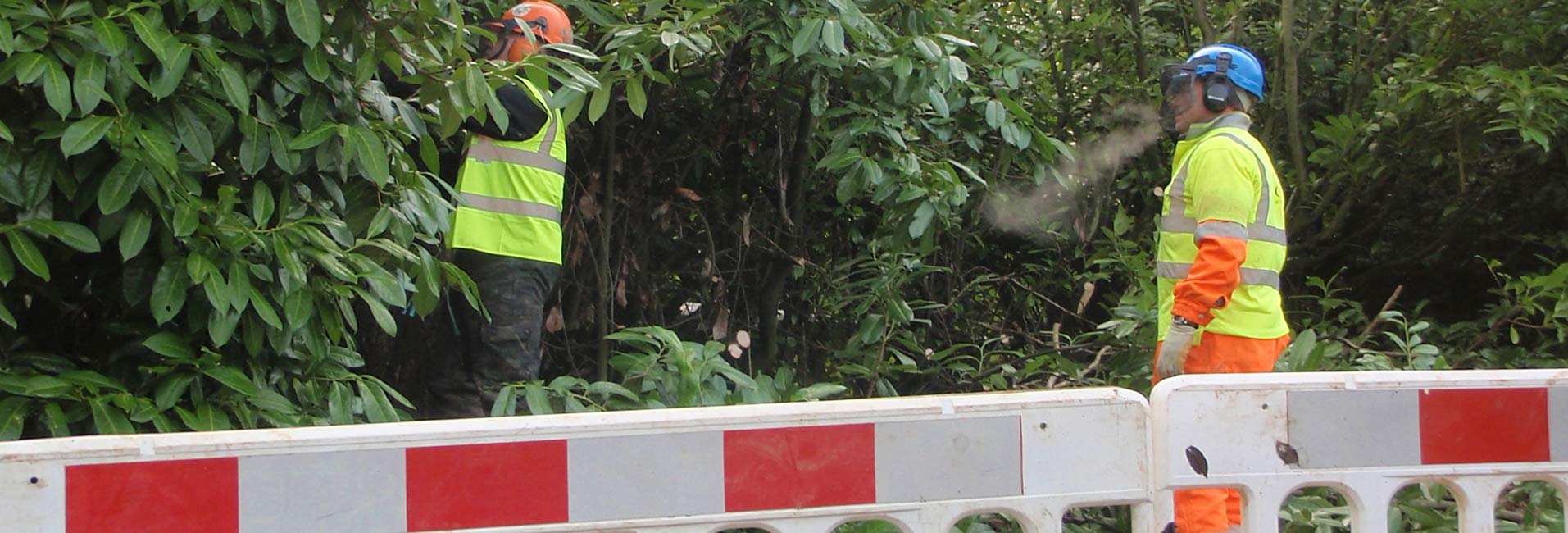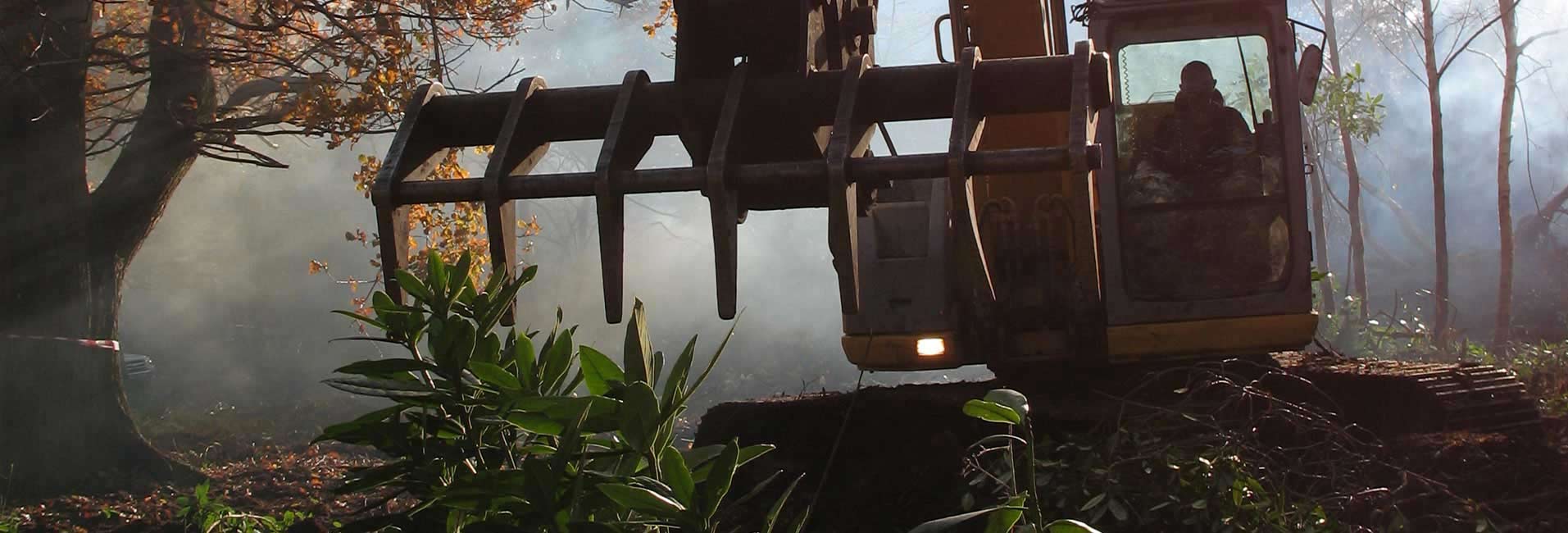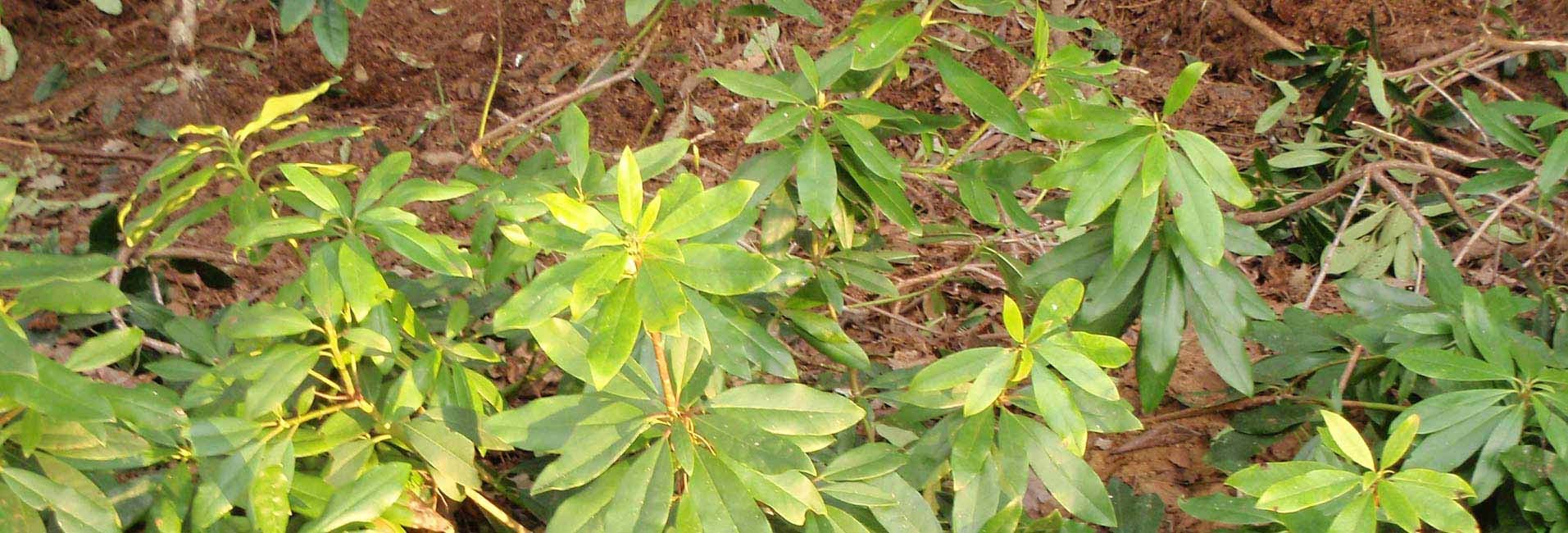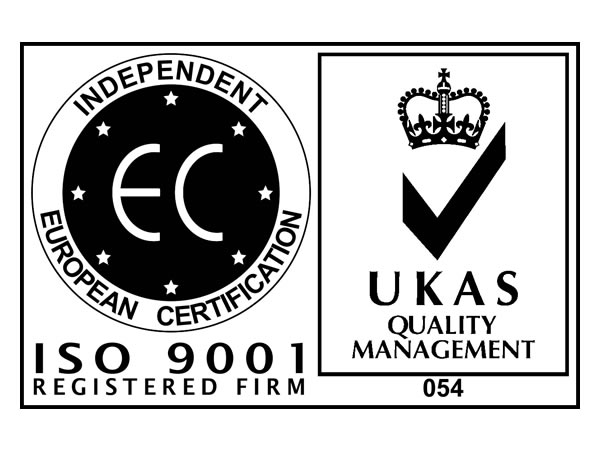Legacy Habitat Management offer rhododendron control solutions across the UK utilising a number of proven methods. We provide complete rhododendron removal and subsequent follow-up work in all environments including SSSI's and other sensitive locations.
Legacy Habitat Management have successfully completed large contract rhododendron clearance projects for a wide range of clients, including County Councils, National Park Authorities and private land owners.
Methods used will be tailored to suit the nature of the site and may involve a complete organic solution by mechanical removal of rhododendron root mass, felling and stump treatment, direct herbicide injection or herbicide spraying. Legacy Habitat Management hold all the relevant certification for such methods and possess a range of purpose built equipment to tackle any rhododendron works.
The resulting biomass from rhododendron removal is dealt with appropriately according to the site requirements. Methods can include composting, burning under licence, or chipping and transportation to a suitable biomass energy facility.
Legacy Habitat Management can assist with rhododendron control management plans and provide phased removal and follow-up works over a number of years to ensure the most effective results are achieved.
Rhododendron Control Background
Rhododendron Ponticum was first introduced to Britain as seed in the 1760's and became readily supplied by the nursery trade throughout the late part of the 18th Century and early part of the 19th Century. This species of rhododendron was used extensively as an attractive flowering plant in parks and gardens and was also used to provide shelter for game on Victorian hunting estates.
It became apparent that with its ability to readily send out suckers from any buried root material and its very effective seed production, rhododendron was becoming a very invasive plant, taking over and affecting the growth of more native species in the oak woodlands and heathlands of western Europe. Soil and weather conditions in the UK are also ideal for the growth of rhododendron.
Populations of birds, earthworms and other wildlife can also be massively reduced in an area invaded by Rhododendron Ponticum, reducing the overall biodiversity of a site. In some cases the ground beneath a large rhododendron plant can be completely sterile with no evidence of other flora or fauna.
Rhododendron clearance or rhodi bashing is usually the first stage of any habitat regeneration programme where there is an abundance of this invasive species. In some areas, the rhododendron invasion can be so extensive that access to the site can be impossible without first removing the bulk of the plant.







